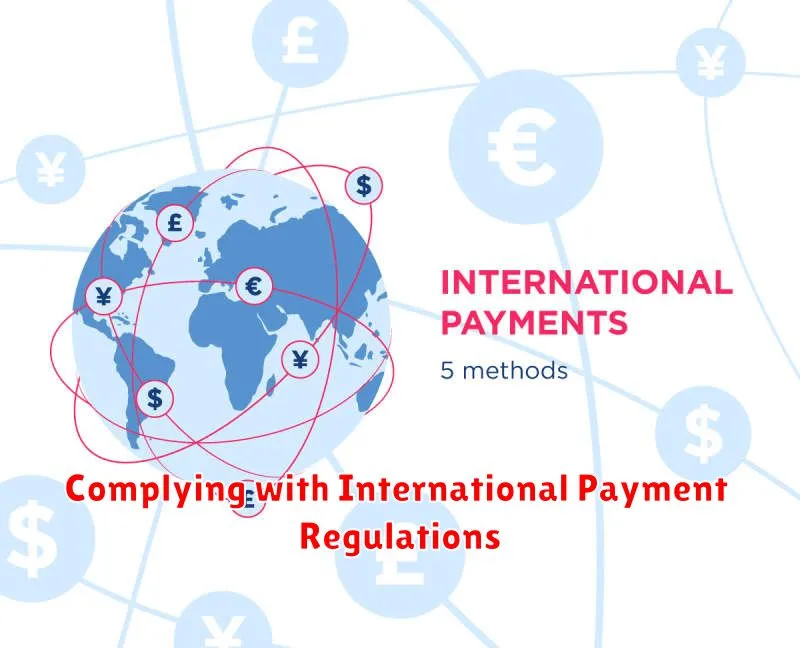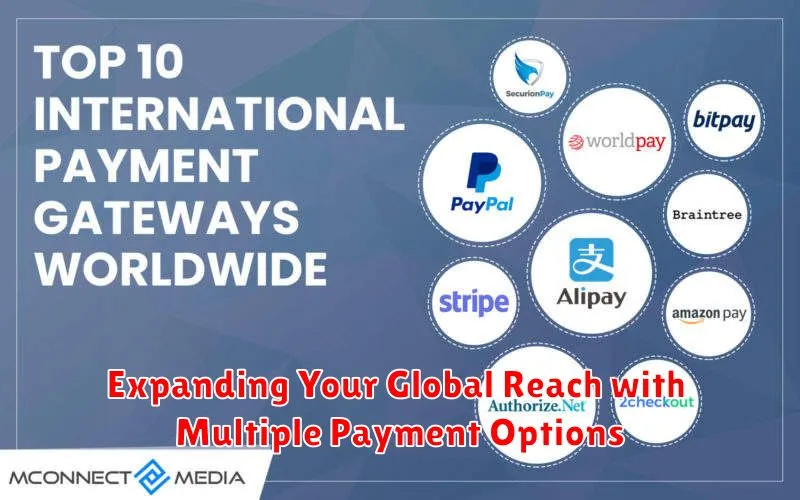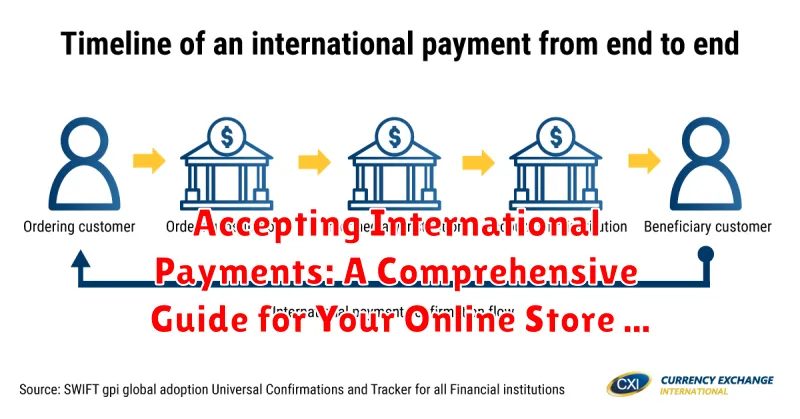In today’s interconnected global marketplace, expanding your online store to accept international payments is no longer a luxury, but a necessity for growth. This comprehensive guide provides businesses of all sizes with the essential information needed to navigate the complexities of cross-border transactions, unlock new revenue streams, and reach a wider customer base. From understanding different payment methods and managing currency conversions to mitigating fraud risks and complying with international regulations, mastering the intricacies of global e-commerce is crucial for success.
This guide will delve into the key aspects of accepting international payments, covering topics such as selecting the right payment gateway, optimizing checkout processes for international customers, and handling shipping and logistics across borders. By implementing the strategies and best practices outlined in this comprehensive guide, your online store will be well-equipped to capitalize on the enormous potential of the global market and establish a thriving international presence. Learn how to seamlessly accept payments from around the world and propel your business towards greater profitability.
Exploring Different Payment Gateways for International Transactions
Selecting the right payment gateway is crucial for accepting international payments. Different gateways offer varying features, fees, and support for currencies and countries. Choosing wisely can significantly impact your conversion rates and overall profitability.
Popular international payment gateways include:
- PayPal: A widely recognized option offering extensive global reach and multi-currency support.
- Stripe: Known for its developer-friendly tools and robust security features, supporting businesses in numerous countries.
- 2Checkout: Provides a comprehensive solution for global e-commerce, including fraud prevention and recurring billing.
- Authorize.Net: A well-established gateway offering various integrations and payment options.
When evaluating payment gateways, consider factors like transaction fees, supported currencies, ease of integration with your platform, and available fraud protection measures. Researching and comparing different options will help you identify the optimal gateway for your specific business needs.
Understanding Currency Conversion and Exchange Rates
Currency conversion is a crucial aspect of international transactions. When a customer purchases from your store in a currency different from your base currency, a conversion must take place.
Exchange rates determine the value of one currency against another. These rates fluctuate constantly, influenced by various market factors. Understanding these fluctuations is vital for pricing your products appropriately and managing your profit margins.
There are different ways to handle currency conversion. You can allow your payment gateway to handle the conversion automatically, or you can set your own exchange rates. Each approach has its own implications for both you and your customers.
Dynamic currency conversion allows customers to see the price in their local currency at checkout. While convenient for customers, it often comes with higher conversion fees. Fixed currency conversion, where you set the exchange rate, gives you more control over pricing, but requires careful monitoring of market fluctuations.
Managing International Transaction Fees and Costs
Successfully navigating international e-commerce requires a clear understanding of the associated transaction fees and costs. These can significantly impact your profit margins if not managed effectively. Transparency is key; ensure you understand the complete fee structure before choosing a payment gateway.
Several types of fees commonly arise with international transactions. These include currency conversion fees charged by payment processors for exchanging currencies, cross-border processing fees levied for transactions occurring across borders, and withdrawal fees applied when transferring funds from your merchant account to your bank account. Additionally, be aware of potential foreign transaction fees charged by your bank.
Negotiating competitive rates with payment processors can help minimize costs. Volume discounts may be available for high-volume businesses. Clearly communicate these fees to your customers. Consider absorbing some costs to offer more competitive pricing and enhance customer satisfaction.
Addressing Security Concerns for Cross-Border Payments
Security is paramount when accepting international payments. Fraud prevention measures are crucial for protecting both your business and your customers.
Implement strong fraud detection tools. These can include address verification services (AVS), card security code (CSC) checks, and 3-D Secure authentication (like Verified by Visa or Mastercard SecureCode). These tools help verify the legitimacy of transactions and reduce the risk of fraudulent activity.
Data security is also critical. Ensure your online store complies with the Payment Card Industry Data Security Standard (PCI DSS). This standard outlines requirements for securely handling sensitive cardholder data. Using a PCI DSS compliant payment gateway can significantly simplify this process.
Consider implementing fraud scoring systems. These systems analyze various transaction data points to assess the risk level of each purchase. This allows you to identify and flag potentially fraudulent transactions for further review or rejection.
Optimizing the Checkout Process for International Customers
A streamlined checkout experience is crucial for converting international shoppers. Minimize required fields to only essential information. Asking for unnecessary details can deter customers from completing their purchase.
Clearly display all costs upfront, including shipping, taxes, and any conversion fees. Transparency builds trust and avoids surprises at the final stage. Offer multiple language options during checkout if possible. This caters to a wider audience and improves user experience.
Address validation should be flexible for international addresses. Strict validation rules can lead to rejected orders due to format differences. Consider providing multiple shipping options with varying costs and delivery times to allow customers to choose the best fit for their needs.
Finally, ensure your checkout process is mobile-friendly. Many international customers shop on mobile devices, and a seamless mobile experience is essential for a positive checkout experience.
Handling International Refunds and Returns
Navigating international refunds and returns requires careful consideration of varying international regulations and customer expectations. A clear and concise return policy is paramount.
Clearly outline your refund and return policy on your website, including details about who covers return shipping costs, especially for international returns. This transparency helps manage customer expectations and minimizes potential disputes.
Currency fluctuations can impact refund amounts. Specify the currency used for refunds to avoid confusion. Be prepared for the possibility that the refund amount might be slightly more or less than the original purchase price due to exchange rate variations.
Consider the logistics of international returns. Depending on your product and the customer’s location, it might be impractical or prohibitively expensive to have items shipped back. In such cases, offering a partial refund or alternative resolution could be a more viable solution.
Complying with International Payment Regulations

Navigating international payment regulations is crucial for the success and legality of your online store. Compliance ensures smooth transactions, builds trust with customers, and avoids potential penalties.
Key areas to address include data privacy, such as adhering to GDPR and other regional regulations. Understanding and implementing proper data security measures like PCI DSS compliance is vital for protecting sensitive customer information.
Tax regulations vary significantly between countries. You need to understand VAT/GST requirements for each region you sell to and ensure you collect and remit the correct amounts. Additionally, be aware of any currency controls or reporting obligations in specific countries.
Anti-money laundering (AML) and know your customer (KYC) regulations are essential to prevent financial crimes. Implementing appropriate checks and procedures will help protect your business from fraudulent activities and maintain legal compliance.
Staying updated on evolving regulations in each region you operate is vital for maintaining compliance and avoiding legal issues. Consulting with legal and financial professionals specializing in international commerce can provide valuable guidance for navigating this complex landscape.
Expanding Your Global Reach with Multiple Payment Options

Offering a variety of payment methods is crucial for attracting international customers. Not all payment methods are equally popular in every region. Limiting options can significantly restrict your potential customer base.
Consider incorporating these widely-used options:
- Credit and Debit Cards: Visa and Mastercard are generally accepted globally, but regional cards may be preferred in specific markets.
- Digital Wallets: Services like PayPal, Alipay, and others offer a seamless checkout experience and are gaining popularity worldwide.
- Local Payment Methods: Research and integrate payment methods specific to your target markets. This can include bank transfers, mobile payments, and other region-specific solutions.
By providing diverse payment options, you demonstrate an understanding of your international customers’ needs and increase the likelihood of completed purchases.

